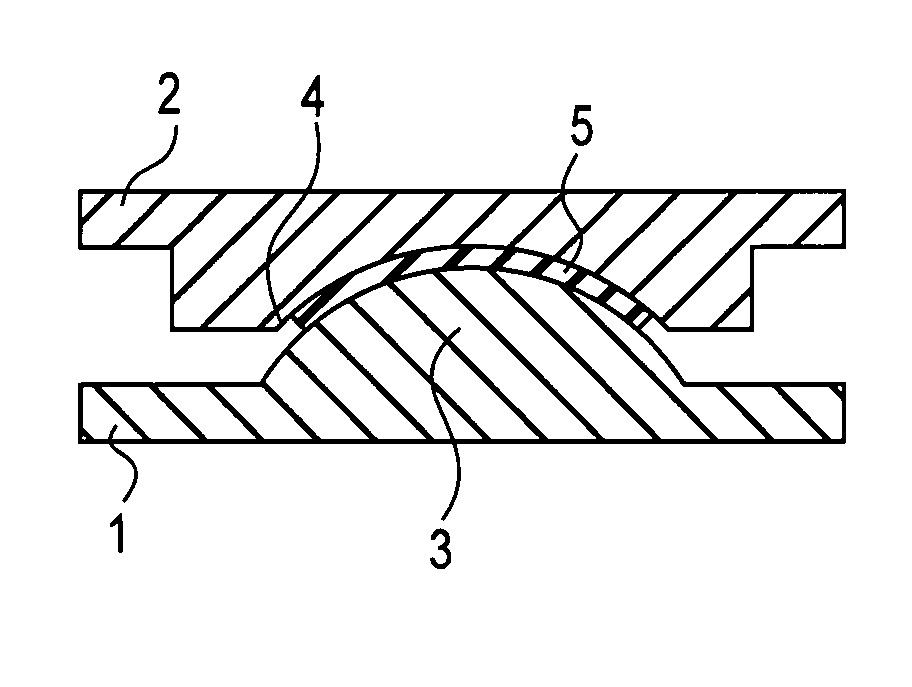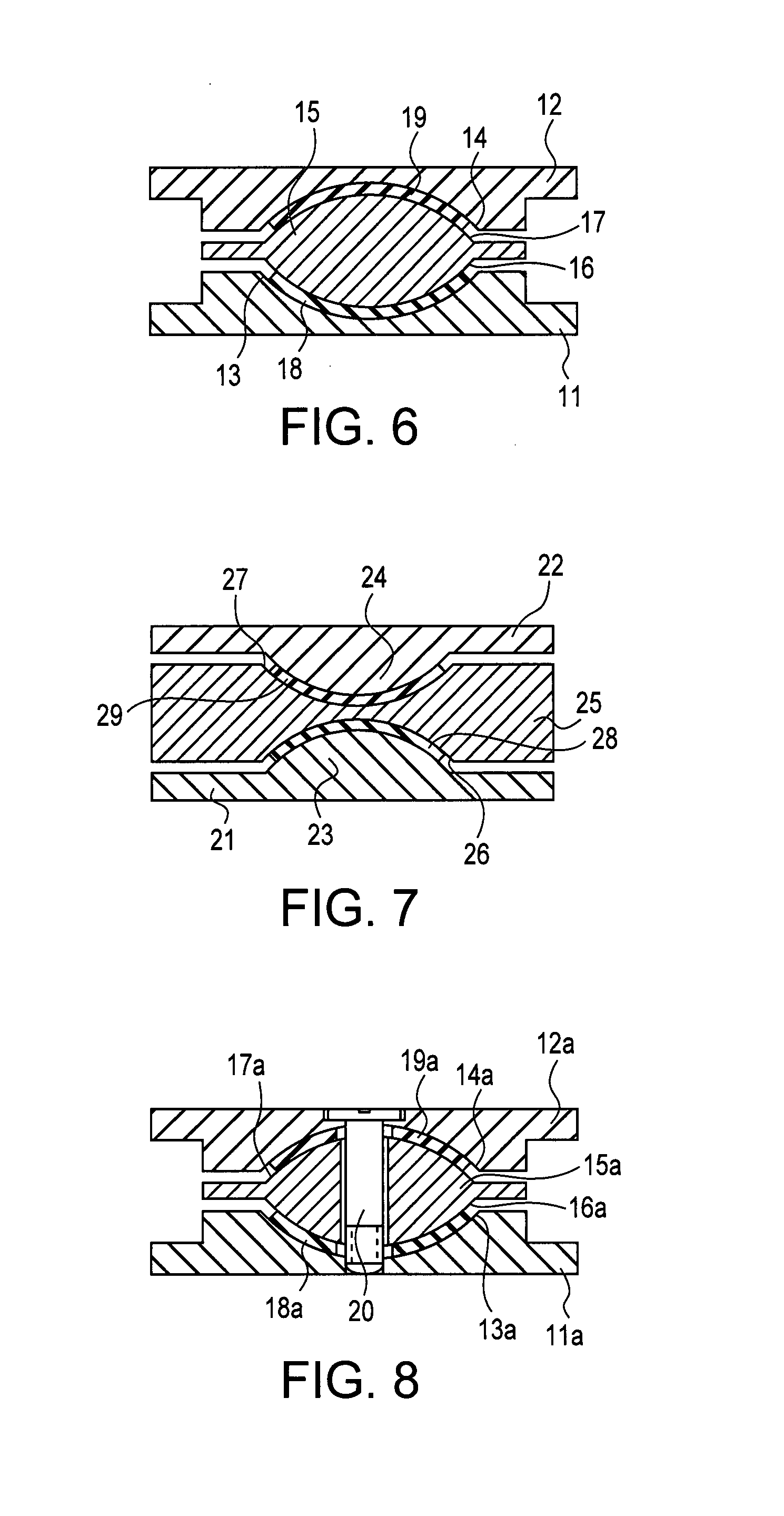Artificial intervertebral disc
a technology of artificial vertebrae and discs, applied in the field of artificial vertebrae, can solve the problems of unavoidable difference between static and dynamic friction coefficients of spherical joints in state-of-the-art prosthetics, unnatural feelings, and inevitable wear of sliding connections
- Summary
- Abstract
- Description
- Claims
- Application Information
AI Technical Summary
Benefits of technology
Problems solved by technology
Method used
Image
Examples
Embodiment Construction
[0023]A “rigid” component in this Specification means a component having significantly lesser deformations than the elastomeric element(s) connecting these components. Specifically, “rigid” is defined here as having the Young's modulus at least ten times greater than the Young's modulus E0 of an elastomer having hardness H60 on scale A of Shore Durometer. This corresponds, in accordance with the industry-accepted correlation shown in FIG. 1, to the Young's modulus E≈3G≧10E0=˜40 MPa, where G is the shear modulus.
[0024]Four embodiments of the proposed disc design are shown in FIGS. 2, 6, 7, and 8.
[0025]FIG. 2 shows an artificial disc comprising lower base 1 and upper base 2, both made of a metal, plastic, or other rigid material. One of the bases has a convex spherical protrusion 3 (shown on the lower base 1), while another base (top base 2 in FIG. 2) has a concave spherical socket 4 coaxial with protrusion 3. Bases 1 and 2 do not have a direct contact, and the space between protrusio...
PUM
 Login to View More
Login to View More Abstract
Description
Claims
Application Information
 Login to View More
Login to View More - R&D
- Intellectual Property
- Life Sciences
- Materials
- Tech Scout
- Unparalleled Data Quality
- Higher Quality Content
- 60% Fewer Hallucinations
Browse by: Latest US Patents, China's latest patents, Technical Efficacy Thesaurus, Application Domain, Technology Topic, Popular Technical Reports.
© 2025 PatSnap. All rights reserved.Legal|Privacy policy|Modern Slavery Act Transparency Statement|Sitemap|About US| Contact US: help@patsnap.com



